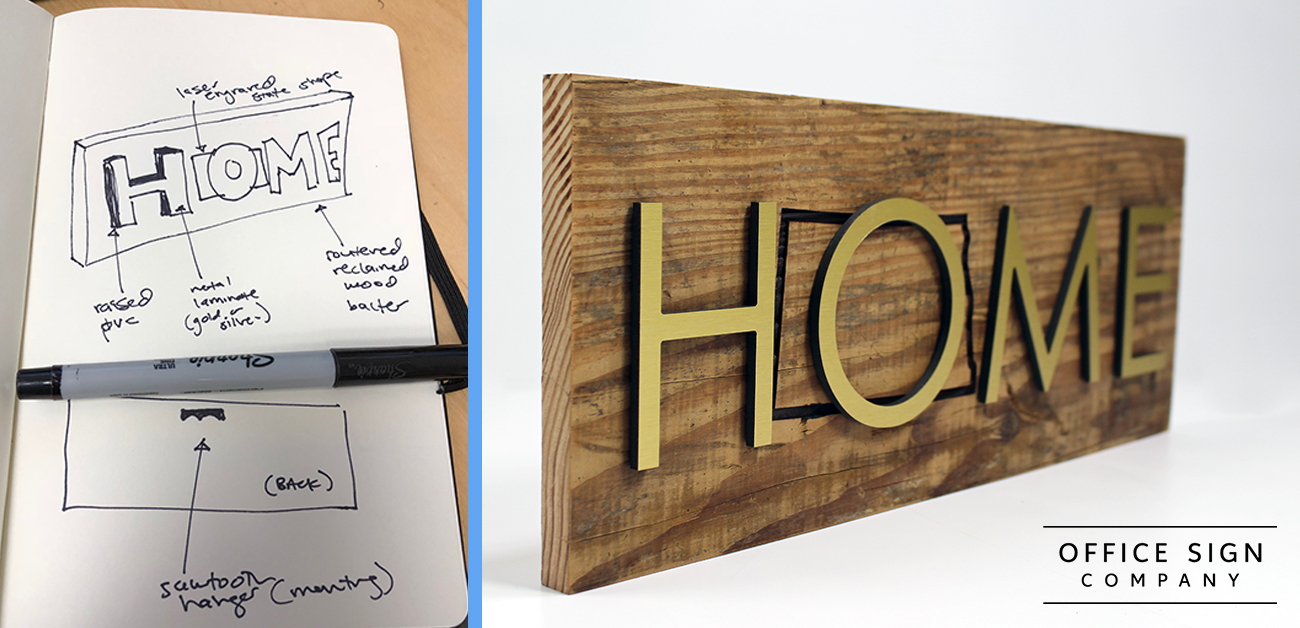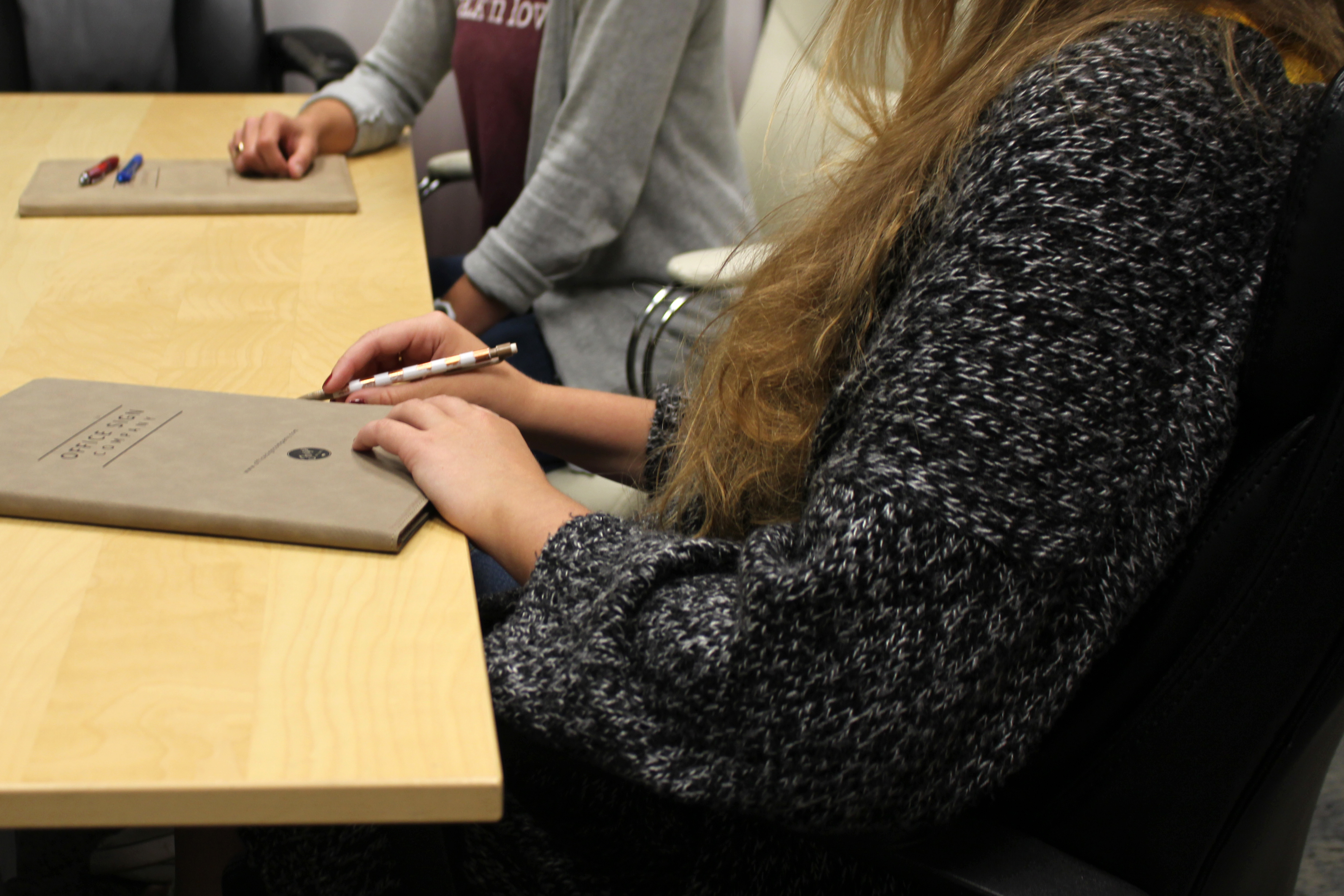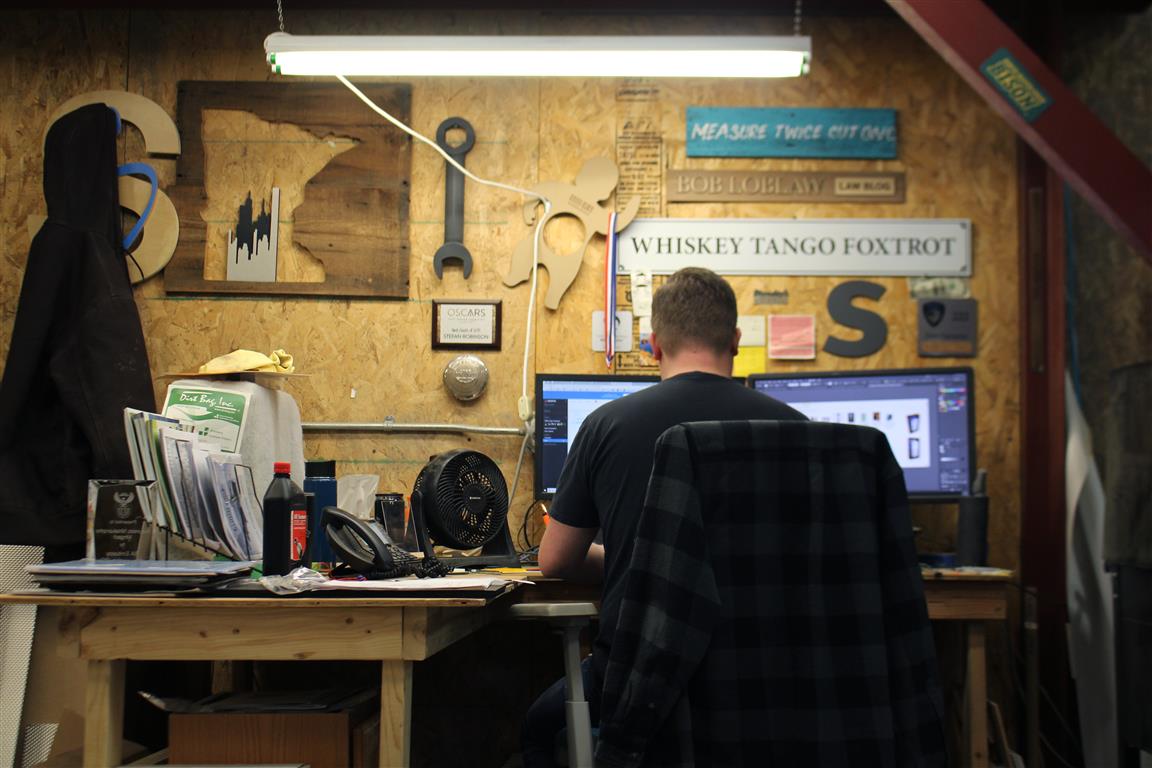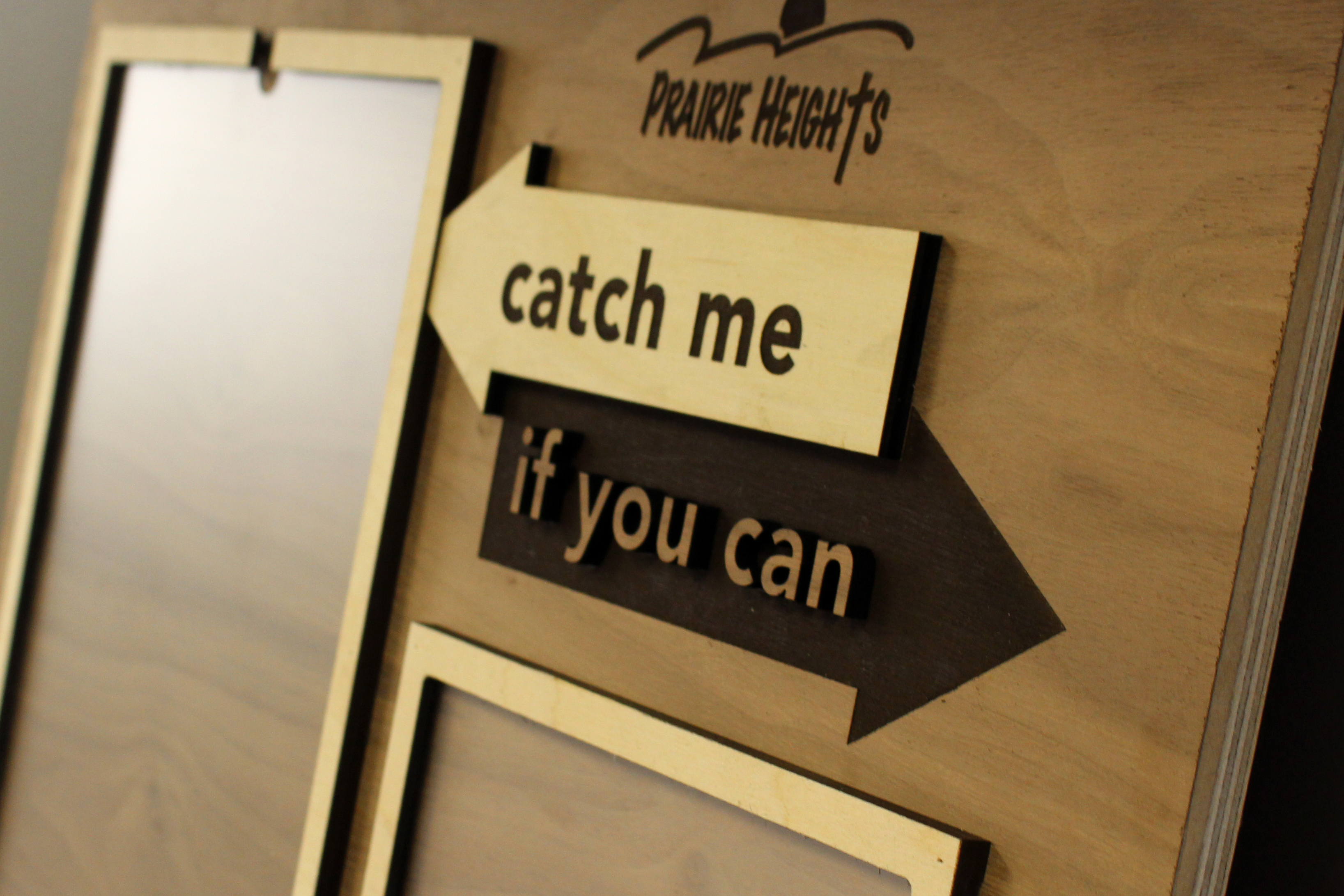
Elevator speeches are awkward.
I’ve been through enough PR training, and been apart of enough networking groups to have a basic outline down, but still… it’s awkward. The basic outline is pretty simple – what my role is at OSC, what products and services we offer, and what sets us apart from our competitors. The last part of that equation, though, can be the most difficult to address. I mean, everyone has the same thing to say right? How can you really separate yourself from your competitors?
“Our turnaround time is the best in the business!” “We really value our customers, and you can tell by our exceptional service.” “Our signs are made with the highest level of quality. I promise.” (For the record, I actually do believe all of those things. But it just sounds like lip service coming from your average marketing/sales guy). So instead, I found a new competitive advantage to talk about in my pitches.
I know how high of quality our products are, and I know how great our service is, and yes, we are extremely flexible with turnaround times and try to always make it work for our customer. But, every other sign company down the street can tell you the same thing, and I can’t necessarily refute that. The one thing that I truly believe separates us from our competition, and that none of our competitors can rival is our innovation. We invest a multitude of resources (time, money & other) into our product development process, and year-after-year have companies (local and national) trying to keep up. So, now I center my elevator speech around that. Here’s a glimpse:
Hi, my name’s Jack Yakowicz and I’m the Marketing Manager at Office Sign Company. We offer a full array of interior and exterior sign and print services, with free digital proofing, 2-day standard turnaround time, and exceptional customer service. However, what really sets us apart is our drive to be the most innovative company in our industry, as evidenced by the investment we put into our product development and process refinement. I’d love to have a chance to show you what we’re capable of manufacturing and work with you on your next project.
That’s it. That is the sales-iest I get, because it’s all I need. Our product development handles the rest, and I have no doubt that the resources we put into prototyping pays dividends in the long-run when it comes to attracting and retaining clientele in our industry. So, how do we do it? What does a “prototype” constitute, and what do we have on deck? In this month’s blog, I’m breaking down our product development process to give you a glimpse into how we turn DOODLES into DOLLARS and see a great return on the time & money invested in product development.
The Conception of the Prototype

When two signs really love each other, and decide to take the next step…
Okay, I’m joking, but the origination of a sign’s life is often as beautiful as that of a baby human. I may be biased. Prototypes at Office Sign Company are typically conceived through one of the following routes:
- Doodles: believe it or not, all that doodling in class that our teachers used to scold us for actually pays off. With the advancement of technology and how much that has impacted the fields of art & design, it’s still amazing how much inspiration can be drawn (pun intended) from the doodling process. Look around any one of our manager meetings, and you’re bound to see at least a few of us sketching signs in our notepads. It also is a great way to articulate what your brain is seeing for a specific, custom project. We’re pro-doodlers here at OSC.
- Customer Service Requests: we keep a log of questions that our CS team fields from clients (prospective and current) for signs they are looking for. Ryan (our CEO) said something to me early on that has always stuck – “if we can answer as many of our customers’ questions as possible, everyone’s life gets easier.” We’ve definitely attached that mentality to our approach with turning customer requests (even as simple as “do you have any gender neutral restroom signs?” into physical products and listings on our website.
- Search Terms on Our Site: on the backend of our website, we’re able to see the daily trends in searches. Most recently, we’ve seen an influx of individuals searching “dimensional signs.” This inspired us to center our prototype committee meetings around what kind of dimensional signs we can add to our site that our customers are searching for. This is just another way that we are aligning our creative efforts with products that our customers are looking for.
- Pinspiration: I titled it as such because Pinterest is awesome. But, in reality, we draw inspiration from a variety of research that’s done of other custom sign projects happening across the world. We’ve befriended custom fabricators in our own neighborhood and all the way to Istanbul. Having a network of individuals that you can draw inspiration from is very helpful for the creative process. And we’re also diligent in making sure that we don’t carbon copy what other sign shops are doing – rather, pick pieces of designs and ideas we like, and tailor them to our own fabrication abilities.
At Office Sign Company, we try to keep a pretty open mind as to where ideas can stem from. Though our CEO is heavily involved in the conception of prototypes, and is the real driver of our product development, we’ve had remarkable ideas come from every single department in our company. Big or small, all product ideas are welcomed, and having a business that maintains the importance of product development begins to drive innovative thinking across all departmental lines. We’re grateful for our creative team that continually thinks outside the box and challenges the status quo.
The Development of a Product

Though the idea creation happens on an everyday basis, the actual development of said idea goes through a much more rigorous process before it actually becomes a living, breathing, buyable product on our website. The steps are as follows:
- Prototype Committee Review. Recently, we launched our Prototype Committee which consists of a rotating group of 6 representatives from our in-house departments (Customer Service, Art, Marketing, Web, Production, Engraving). By having representation from every department at our company, we can ensure that the best ideas are constructed, and that communication can easily be disseminated across the company. In this committee meeting, ideas for prototypes are reviewed and created, and every one has the opportunity to speak up. Whether it’s a mini door marker sign or flat cut metal letters, ideas of all sorts are accepted (and encouraged) to be brought up in this format.
- Enter It In The App. The best ideas from this meeting get entered into our internal workflow app. This is where marketing begins setting pricing and concocting campaigns for roll-out, web begins writing the product listing and making sure it speaks well with search engines, art begins proofing out design ideas, and production and engraving have an opportunity to mold the progress and prepare for the fabrication. Having a workflow app to manage our product development process ensures that by the time a product goes live on officesigncompany.com, we’re ready for action, and feel confident in the quality of the new product.
- Fabrication. After designs have been approved, and the order has been entered in our system, the product development process takes its next stop at our Production Facility. Complete with vinyl, printing, engraving, and quality control stops, each product that runs through our shop is seen and worked on by our magnificent team of fabricators. This is a stop where product ideas can change the most, as we learn of new efficiencies for making products easier to produce, have a higher grade of quality, etc. Our fabricators take on everything from new floor signs to renovated directories, and are key cogs in what makes our company so innovative.
- Product Review. Before the finished product leaves our production facility to head back downtown to our web & marketing team, every individual who had a hand in the fabrication fills out a spec sheet to review (and approve) it being added to our website. Sometimes, it’s back to the drawing board in coming up with a new concept that is more efficient. Other times, there’s only a slight tweak or some design considerations that are discussed. If our product review is anything less than unanimously positive, we don’t add the product to our website. It’s that simple! This ensures that our customers are as happy with the products as we are (and trust me, we’re tough on ourselves).
- Photography and Touch-Up. When a spec sheet shows unanimous approval, our web team preps to get the product live. We have photos taken (from a variety of angles) of each product, make final changes to any descriptions (long, short, or meta), and get ready to unveil this to our audience. Our marketing team also begins prepping efforts to communicate the new product announcements, including writing newsletters, social posts, press releases, and more.
- Education. The final step before a product goes LIVE is the education portion. A mass email is sent to our entire staff to let them know the new product is going live, customer service is talked to about the new product (to help them field any questions they may get from site visitors), and the entire team prepares for the unveiling.
- Monitoring the Progress. By following along on how our product is selling, we’re able to be reflective and learn for our next product we develop. If visitors are not going to our listing, it puts more pressure on marketing & web to draw their attention. If the product listing is being visited, but no purchases are being made, it may indicate that we have some design work to do to make this more appealing. If customer service field notes like “I like this product, but can we have it change in this way…,” well, then we begin the prototype process all over again!
The entire process of product development can sometimes take up to a month for specific products, but we feel that the time & energy invested is well worth it for our business. By continuing to innovate, we’re not only adding more products that our customers may be interested in, but we’re ensuring that our team stays creatively challenged, engaged, and can think outside of the box to make custom solutions. All of these benefits gained from prototyping help move us one step closer towards our mission of being the best sign company in the world.

Written By: Jack Yakowicz
Contact at: jack@officesigncompany.com








